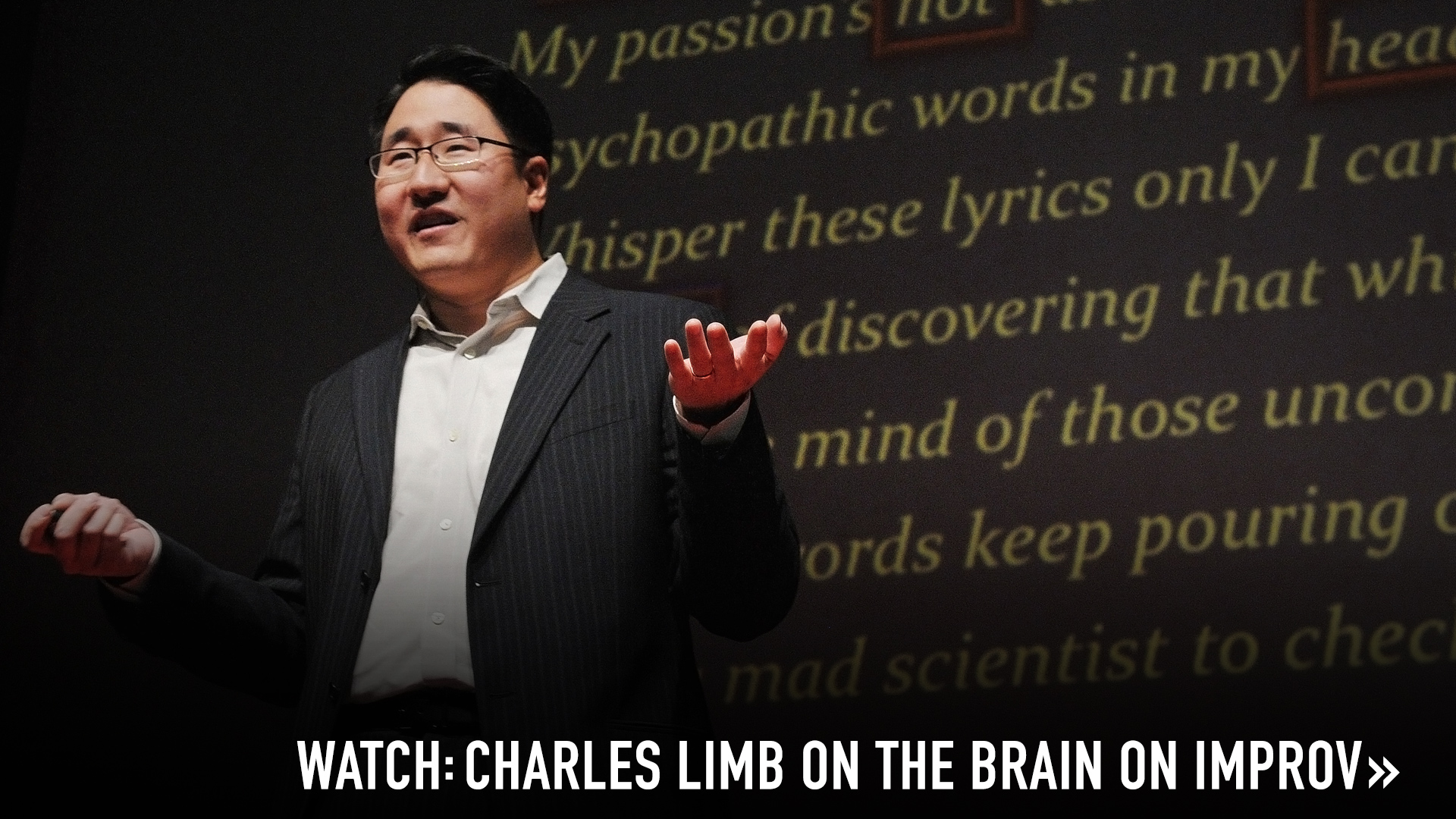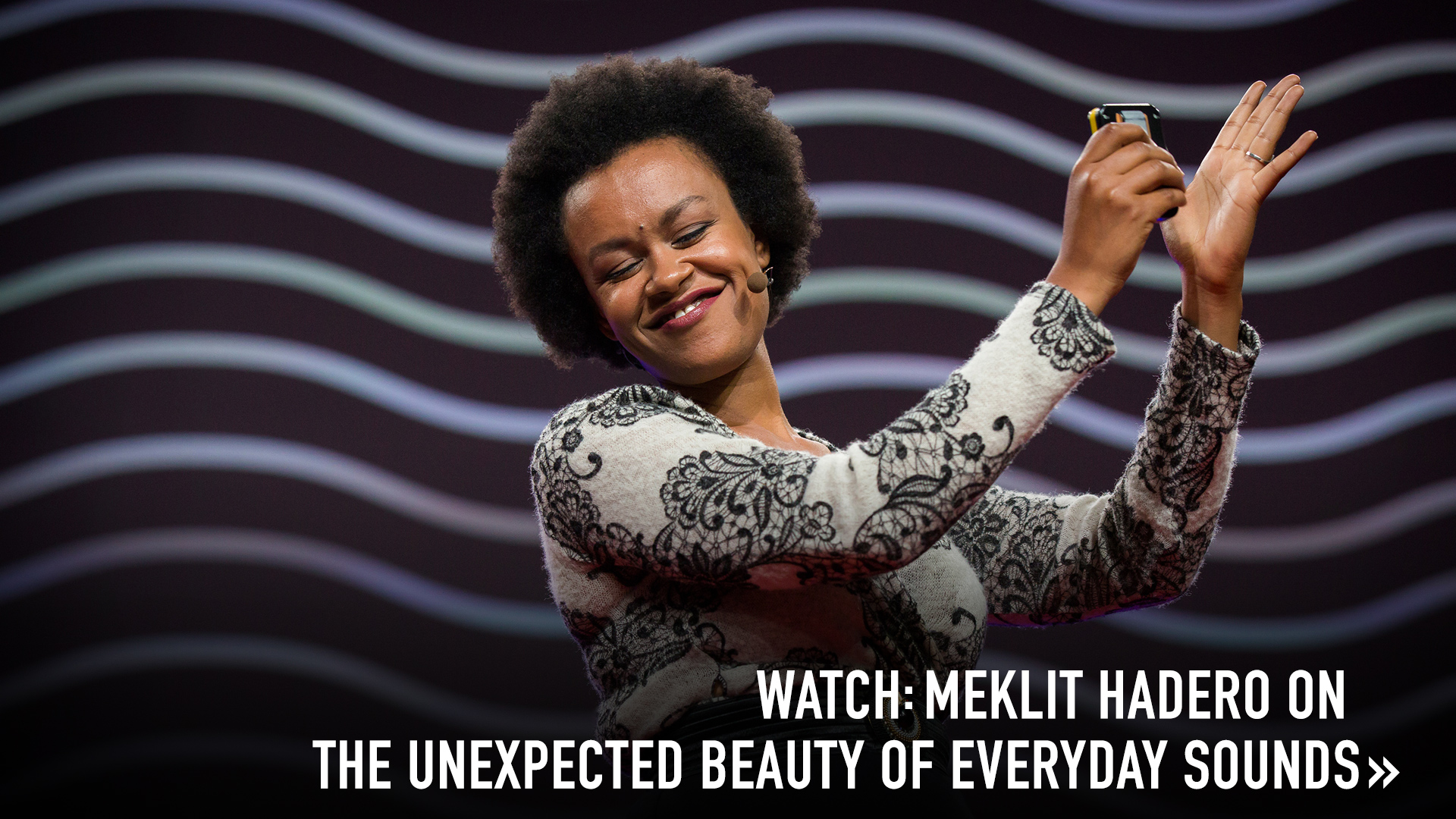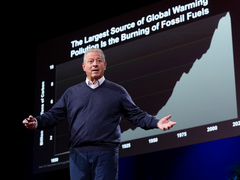
What’s it like to have a song inside your head, itching to get out? A neuroscientist and a songwriter compare notes from the frontier of music and science.
Music is the most complicated sound the brain can process. But why did our brains evolve such advanced tools to create and enjoy it? Neuroscientist and jazz musician Charles Limb (TED Talk: Your brain on improv) has asked himself this question time and again. He recently got together with songwriter and musician Meklit Hadero (TED Talk: The unexpected beauty of everyday sounds) to discuss the relationship of music and the brain. First, he explained his working theory that music > language.
Music is the most advanced auditory stimulus there is. “When we look at the brains of humans, and how they evolved from the brains of animals, it becomes clear rather quickly that the human auditory system is capable of processing sound at an enormous level of complexity,” Limb says. “Music, I think, is the highest refinement of that complexity, meaning that as far as I know, there’s nothing in the auditory world that is harder for the brain to process than music.” And why would a biological system be capable of such a complicated task? For Limb, the answer is connected to the human ability to innovate. “The idea that you can improvise a jazz solo today is a direct reflection of the fact that our brains have this innate capacity to create and to generate novel ideas, which itself is absolutely integral to how we survived as a species,” he says. Of course, we still don’t know enough about how precisely this system evolved — or the advantages the capacity for musical expression might confer on a species.
Yes, your brain does change when you’re composing music. For many musicians, the path to creation leads them through some very specific (often odd) behaviors. For Hadero, a musician who grew up in a household of scientists, “composition mode” is a sometimes weeks-long fugue of discovery. “I think of composition mode as a mix of discipline and mystery,” she says. She cooks constantly, for one thing, and she keeps her phone close by to record melodic ideas as they strike her. in general, she tries to “swim into a song rather than approach it solely intellectually.” She might start with vocal improvisations that sound like babble, just noises and sounds over a melody, and later she’ll excavate phrases on which a song can take shape. For his part, Limb’s quest to understand what’s actually going on in the brain during this instinctual process has shown that the area of the brain related to self-monitoring and observation deactivates when musicians are improvising, while the region linked with self-expression lights up. So Hadero’s babble in fact represents an important internal physiological change. “You’re actually changing the way your brain is functioning,” he tells her. Now the deeper challenge: to measure such changes, understand what’s really going on inside a musician’s skull — and in doing so try to get a deeper understanding of how creativity actually works.
Experiments on creativity are expensive … and it’s almost impossible to measure anyway. Hadero’s creative process takes many weeks, she says, “and the hardest part is just starting, and the first few days are usually crap. Nothing comes out. And then it gets more and more fluid as things go on.” So, she asks Limb, have you ever done an fMRI study on an extended period of musical creativity, like the musicians from the Indian classical tradition who can improvise for 12 hours or longer? Well, says Limb, an fMRI study can run upwards of $700 an hour, so it’s more practical to study musicians who quickly engage the brain in creative states. That, he says, is one of the reasons he gravitated towards jazz: “I model the experiments to take advantage of their speed of improvisation,” he says.
Beyond the expense and impracticality of an fMRI study (which entails a musician playing a modified keyboard while lying inside a long metal tube), merely designing the experiments poses huge problems. For instance, how can you tell whether or not a subject’s creative output has actually improved? Or as Limb puts it, how can you say, “these 100 jazz solos were better than these 100 jazz solos?” He continues, “Scientists have no way to quantify or measure whether creative output is any good. The problem is that we’re trying to do studies on things that enhance or improve or even disrupt creativity. And in order to actually make something like that work, or feasible, we have to have a way of measuring whether the creativity was improved or worsened, and I don’t know how to do that. Yet.”
Art and science can work together to understand creativity. “Quantitative analysis of a subjective experience is a tall order,” acknowledges Hadero. For her, assessing the value of her music is purely intuitive. “I ask myself if a piece possesses me,” she says. “Is it beyond my control, whether I’m inside of the piece or not? Did I travel? Did the audience travel? That’s what I’m looking for in a musical experience — to have the appreciation jump out of you. You don’t pay attention because you should, you pay attention because you can’t help it.” Such intuitive evaluation, of course, is tough for data-driven scientists to measure. They may have the same passionate reactions in the concert hall, but transferring those experiences to the lab is another story altogether. That leaves a big cultural gap between the two groups — and a big hole in creativity research. Limb’s latest push: to bring artists and scientists together to co-create experiments that can give insight into creativity and the neural processes that give rise to it. With the involvement of artists, Limb reflects, “we really can measure things that were never up for measurement before.”
Photo illustration by Kelly Rakowski/TED.

















